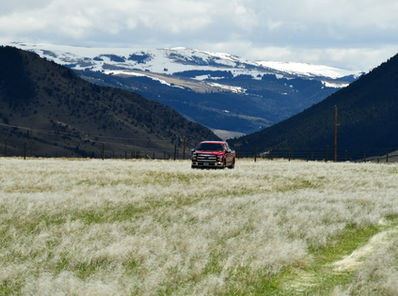
CASE STUDY
Montana Ranchland
Single NutraFix Application Converts Cheatgrass-Dominated Pasture to Thriving Perennial Grassland in Southwest Montana
Study Name
Montana Ranchland
Location
Southwest Montana
Overview
This long-established Southwest Montana ranch struggled for years with cheatgrass-dominated pastures despite multiple restoration attempts. A single application of NutraFix® Micronutrient Fertilizer successfully shifted the vegetation community from invasive annual grasses to healthy, resilient perennial forage.
Background
Located in the high-elevation dry valleys of Southwest Montana, this historic ranch has produced livestock for more than a century. After a change in ownership in the early 2000s, the operation transitioned to dryland grazing rotations and implemented soil-health-focused grazing strategies.
However, pastures that were once irrigated and farmed struggled to adjust to the new system, and upland fields quickly became dominated by cheatgrass, reducing forage quality and increasing wildfire risk.
Multiple restoration attempts—including herbicides, reseeding, and grazing adjustments—failed to reverse the invasion.
The Problem
Restoration methods typically used on Western rangelands proved ineffective. Cheatgrass continued to outcompete native grasses due to:
-
Low soil fertility
-
Limited moisture
-
Historic disturbance
-
A depleted perennial grass seedbank
A new strategy was required—one aimed at improving soil nutrient density rather than relying solely on chemical or mechanical treatments.
Site Challenges
Restoration efforts faced several obstacles:
-
High-elevation dry valley climate
-
Arid conditions with inconsistent precipitation
-
Previously farmed uplands shifting to dryland pasture
-
Poor soil structure and limited organic matter
-
Heavy cheatgrass dominance with almost no visible perennials
Applications & Methods
In early May 2019—when cheatgrass plants were roughly 2 inches tall—the landowner applied:
-
NutraFix Micronutrient Fertilizer at 400 lbs/acre
-
Applied using a truck-mounted spreader and a pull-behind hopper spreader
-
Multiple perpendicular passes for consistent coverage
-
Followed by annual vegetation monitoring to assess long-term response
Learn more:
🔗 How NutraFix Improves Soil Nutrient Availability
Results: Permanent Vegetation Shift After a Single Application
The impact was immediate and long-lasting:
✔ Rapid Change (2 Months Post-Application – 2019)
Native perennial plants in the existing seedbank responded quickly. Monitoring showed clear shifts toward desirable species.
✔ One Year Later (2020)
Perennial grasses matured fully. Cheatgrass was rarely observed.
✔ Six Years Later (2025)
-
Cheatgrass: 0% in treated areas
-
Perennial grasses: ~100% cover
-
Grazing animals preferentially used the site due to the nutrient-rich forage
-
Adjacent untreated pastures remained cheatgrass-dominated
-
No recolonization occurred, suggesting the cheatgrass seedbank was effectively depleted
This project demonstrates that a single application of NutraFix can result in stable, long-term conversion of plant communities in depleted rangelands.
Conclusion
On this Southwest Montana ranch, NutraFix Micronutrient Fertilizer achieved what herbicides and grazing adjustments could not—a permanent transition from cheatgrass to productive perennial grassland. This long-term improvement boosts forage quality, ecosystem resilience, and wildfire resistance while supporting sustainable grazing operations.
Have a Restoration Project? Let's Talk.
Email us: info@edaphix.com


